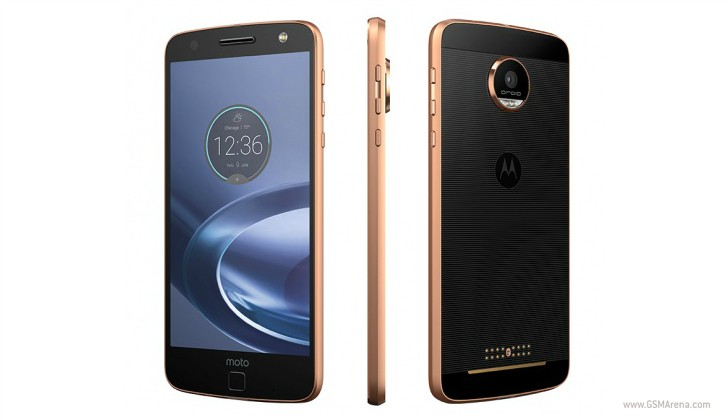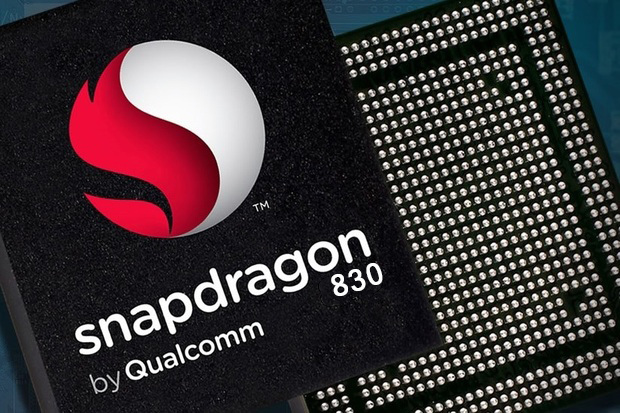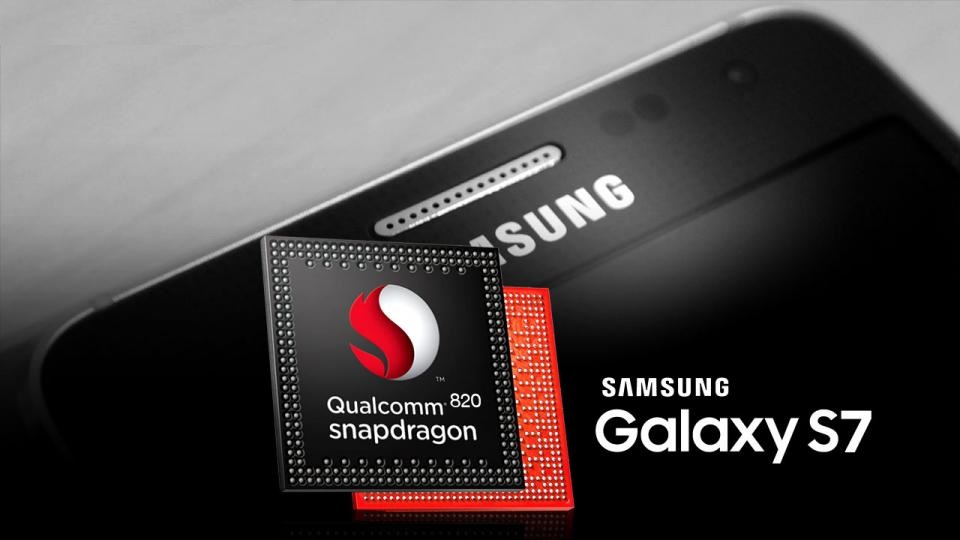Search result

As expected, Huawei has made it official that the Mate 8 will be released as the company's most advanced flagship smartphone. In accordance with what was teased before, this device is powered by the Chinese firm's latest Kirin 950 SoC with octa-core CPU and Mali T880MP4 GPU, and features a 6-inch FHD IPS display.
For those who are still in the dark, the Kirin 950 chipset comes with four high-power Cortex-A72 cores, clocked at up to 2.3 GHz and an additional four power-saving Cortex-A53 ones, clocking at 1.8 GHz.

There's also an i5 coprocessor that "supports speech recognition, low-power consumption MP3, all the functions of a sensor hub, fused location provider (FLP) navigation, and reduces location-based power consumption," as per the statement given by the company in a press release. The SoC is manufactured by following TSMC's 16 nm FinFET process. Made from aerospace-grade aluminum and 2.5D curved diamond cut glass, the Mate 8 also comes with a rear-mounted fingerprint sensor. In terms of camera, the smartphone has Sony's latest IMX298 16MP sensor at the rear end and an 8MP snapper on the front.
There will be three versions of the Mate 8, based on RAM and storage. Here's the breakdown:
- 3GB RAM/32GB storage: 2999 CNY ~ $470
- 4GB RAM/64GB storage: 3699 CNY ~ $580
- 3GB RAM/128GB storage: 4399 CNY ~ $690
The press release reveals that the handset is currently available in China. The international availability details will be made public at CES in January next year.
Source: cnet

Samsung quite recently launched an upgraded Galaxy A8 smartphone in Japan and in the process it has made the original device more powerful. They unveiled new-generation Galaxy A series devices along with the 2016 Galaxy A3, Galaxy A5 and Galaxy A7. But a completely new variant of the Galaxy A8 was not launched.
The much anticipated Galaxy A9 has not made its debut just yet either, but apparently the Galaxy A8 will come power packed. Although it has not been fully revamped, a new Galaxy A8 version for Japan has now entered the market, laced with a more powerful processor..
The original Samsung Galaxy A8 was unveiled back in August 2015 and it continues to increase its reach to new geographical regions. While that model was powered by either a Snapdragon 615 processor from Qualcomm or an in-house Exynos 5430 processor from Samsung, the new Galaxy A8 model made for Japanese market now boasts an Exynos 5433 SoC.
This is a prominent upgrade for the CPU, as the Exynos 5433 is actually more powerful than the Exynos 5430 SoC found on the original Galaxy A8. Interesting thing to note here is that the CPU model numbers looks very close, but the two processors actually have many differences.

The Snapdragon 820 SoC is right now the most powerful chipset that's powering Android smartphones in the market, but rumor has it that an even more powerful processor is on its way from Qualcomm and it may power the upcoming Samsung Galaxy Note 6. If the rumor is true, then the Galaxy Note 6 might just become the most powerful phablet ever created. If we were to take a cue from Samsung's earlier releases in regard to the Note series, then the Galaxy Note 6 will probably be revealed somewhere in between August to September.
Although nothing has been officially confirmed yet, the SD 823 SoC is supposedly made up of 64-bit class Kryo quad core processors, a Hexagon Digital Signal Processor and the Adreno 530 GPU clocked at 720MHz. While the customers in the US will be able to enjoy the raw power of the 823 SoC (if the rumors are to be believed of course), the international variants will probably be powered by an Exynos processor. We have already seen the trend starting with the S7 and S7 Edge this year.
In other specifications, the Note 6 may sport a 5.8-inch Super AMOLED display with QHD resolution. It is also rumored to be backed up by 6GB of RAM, but the chances of seeing a 4GB RAM variant is much higher. The S7 has a very good camera and the Note 6 will supposedly see an even more improved camera performance with the help of something that is termed as Super Optical Image Stabilization System. Other standard features like water and dust resistance, along with the hybrid secondary SIM card slot/micro-SD card slot from the S7 series will almost certainly make their way onto the Galaxy Note 6 as well. We will keep you posted on this as things develop.

We are pretty much used to seeing Qualcomm manufacturing the flagship grade 8xx series of Snapdragon processors every year for a while now, but rumors are indicating that this scenario could change in 2017. Samsung might just be exclusively manufacturing the upcoming SD 830 SoC for Qualcomm next year. The same rumor also reported that this new chip would be based on a 10nm FoFLP process, which is a new cooperative venture by Samsung and Qualcomm. This new Fan-out Panel Level Package (FoFLP) process will make printed circuit boards unnecessary for the package substrate. The advantages will include better battery life and thinner frames along with making I/O ports much easier to put in.
Allegedly, Samsung will continue to produce its own brand of Exynos processors as well and the upcoming Galaxy S8 will be launched in the same way as it had been done this year. This means that the international version of the S8 will sport the Exynos 8895 SoC, while the US versions will come with SD 830. However, the performance and battery life of the two variants should not differ by much next year, if both chips are made by Samsung on a 10nm process.
Saikat Kar (tech-enthusiast)

It is official now as Samsung has confirmed today that the company has indeed started with the mass scale production of an industry first 10nm application processor. This will replace the current 14nm FinFET processors and bring in better power efficiency along with faster performance to flagship devices in 2017. In spite of being based on a similar 3D transistor structure as its 14nm predecessor, the smaller 10LPE manufacturing process allows for an increase of 27-percent in performance and 40-percent in energy efficiency.
If you are wondering when it will be released and which processors it will power, it is unclear as of now, since no comment was made on that subject. All that is known is the fact that it will come early in 2017. Many were of the opinion that the upcoming Qualcomm Snapdragon 830 would be the one to utilize this 10nm SoC, but other reports are suggesting that Qualcomm is shifting towards partnering with TSMC in manufacturing the SD 830. What is almost certain is that the 10LPE SoC from Samsung will be powering its own brand of Exynos 8895 processors, which will likely debut with the Samsung Galaxy S8.
Saikat Kar (tech-enthusiast)

CPU processors specifications have some critical points (Power efficiency vs. Performance). Samsung's latest chipset, the Exynos 7 Octa 7420 which is powering the Galaxy S6 and the Galaxy S6 Edge, is already shaping up to be a true powerhouse, but rumors about a new system-on-a-chip from South Korea are emerging around the web.
According to the latest reports the next Exynos chip will be powered by custom cores, rather than the stock Cortex A72 silicon. The SoC is allegedly codenamed "Mongoose" and will be clocked at 2.3 GHz. The rumor also cites a single-core Geekbench score, which is impressive, to say the least. The number is around 2200, which is about 45% better than the current Exynos.
We may see this chip in the upcoming Samsung Galaxy Note 5 later this year.

Apart from the Snapdragon 835 and Adreno 540 powered versions of the Galaxy S8 and S8+ that have been launched in the US, Canada, China and Japan, the two smartphones also have an international version for all other countries, which is being powered by Samsung's in-house chip, the Exynos 8895 CPU and the Mali-G71 MP20 GPU. According to multiple test results made public by GSMArena, it seems that the Mali-G71 GPU is quite a bit more powerful than the Adreno 540 as the former manages to beat the latter in almost all benchmarking tests. It should be noted that both the SoCs are made by Samsung on their own 10nm FinFET process and have almost identical features and capabilities.

You will find the following screenshots of the test results to be self-explanatory, but it was a bit surprising to find that just like last year, the Exynos CPU is faster than the Snapdragon 835 this year around as well; at least in most tests that is. The Qualcomm chip managed to win back a few as well. The most interesting observation according to me is how the iPhone 7 plus still manages to mop the floor with all Android handsets when it comes to single-core performance in both GeekBench 3 and 4. When it comes to AnTuTu, the iPhone 7 Plus was beaten by the Galaxy S8+ Exynos version, but not even by a 1000 points! The SD 835 powered S8+ on the other hand, lost to both its Exynos counterpart and the iPhone 7 Plus significantly. Check out GSM Arena for the rest of the test results in detail.

Saikat Kar (tech-enthusiast)

It wasn't LeTV, but Qualcomm who revealed the upcoming LeTV Le Max Pro as the first Snapdragon 820 powered smartphone. At the Consumer Electronics Show (CES) 2016 in Las Vegas, Qualcomm made two major announcements with the first being an introduction to the automotive Snapdragon 820 chipset, termed "820Am." Apart from helping the driver with real time assistance in navigation and performing other "smartcar" functions, the Snapdragon 820 Am will also enable movement-tracking when supported by appropriate hardware sensors.
The 820 is actually a quad core processor wherein last year's 810 was an octacore CPU. There are four Kryo processor cores inside the CPU and each one is clocked at 2.2 GHz by default. Apart from the Snapdragon 820 processor, the LeTV Le Max Pro will be powered by an Adreno 530 GPU and 4GB of RAM.
The extremely well-built Le Max Pro will offer three non-expandable storage options; 32GB, 64GB and 128GB. The enormous 6.33 inch 1440p display is beautiful to look at and perfect for consuming media, albeit a little too large for smaller hands. A 21 megapixel camera and an ultrasonic fingerprint scanner further add to the repertoire of the most powerful phone announced so far (theoretically). We will just have to wait and see if such a huge 2k display and the Snapdragon 820 SoC proves to be too much for the 3400 mAh battery housed within.

We've all heard the stories and the explanations, promises and let downs surrounding the Snapdragon 810. The whole overheating saga has entirely engulfed the existence of the beastly SoC and has rendered it a major market failure. The drama still rages on, especially since a few unlucky upcoming devices, like the OnePlus 2 are still set to incorporate the troublesome chip, but Qualcomm seems to be cutting its losses and moving forward.
The next major step, of course, is the Snapdragon 820, which initially got announced at MWC 2015. It promises cutting edge performance and far better handling of overheating and throttling, a lesson which the manufacturer had to learn the hard way. Since then, news has mostly died out and the chip sunk into the realm of rumors. There were even talks of a sibling, dubbed the Snapdragon 815, but that was quickly denied.

The Snapdragon 820, however, is still on its way and a new report shows that it might be closer to consumer markets than ever. According to industry sources, an initial batch of chips has already been sent to a customer for testing. If everything pans out, we might start seeing the chipset in various devices shortly after.

Lenovo has just unleashed a brand new series, which will replace the Moto X series of smartphones, starting from 2016. Both the phones in the new Z-series will come with top tier specs like a SD 820 CPU, a 5.5-inch QHD panel, 4GB of RAM and even the choice for 32GB/64GB in-built storage (along with expandable SD card slots). The regular Moto Z will sport a 13-megapixel rear sensor with laser autofocus, optical image stabilization and a dual tone LED flash for pitch dark conditions. On the front, there's the 5-megapixel snapper with a dedicated selfie-flash and a wide angle lens for group selfies. All this will be powered by the Quick charging 2,600mAh battery inside the Z.
The Moto Z Force has the bigger 3,500mAh battery and a shatterproof glass on the front. Lenovo calls the glass "ShatterShield" and they are confident that it cannot be broken by even the roughest of falls. The thicker and more premium device also features a higher resolution 21-megapixel sensor with phase detection laser autofocus, optical image stabilization and an aperture of f/1.8 for low-light photography. In spite of the flagship specs, what we did not like is the missing headphone jack that we have grown accustomed to. Although an USB Type-C to headphone adapter is included in the box, it means that you cannot simultaneously use the Type-C port for charging or data syncing, while listening to the headphones.

In addition to the missing 3.5mm jack, the two Moto phones also bring something else that the market is just getting accustomed to. Both phones have 16 magnetic dots at the lower-back area and they are equipped to connect with the "Moto Mods." Similar to what we saw with the LG G5 modular phone that was released earlier this year, the Moto Mods are modular accessories created specifically for the Moto Z smartphones to enhance the device's already impressive capabilities. There's the InstaShare Projector mod and some stylish case mods, but we found the JBL Soundboost mod to be the most impressive with its twin 3W speakers and a 1,000 mAh battery to boost the phone's usage time.

As is evident, the Moto Z and the Moto Z Force has a LOT to offer, but you will have to wait till September to get your hands on one, if you are outside the US. Verizon in the US however, will release their "Droid Editions" sooner.
Author: Saikat Kar (tech-enthusiast)
© 2023 YouMobile Inc. All rights reserved





